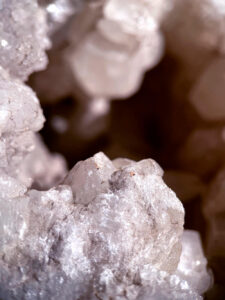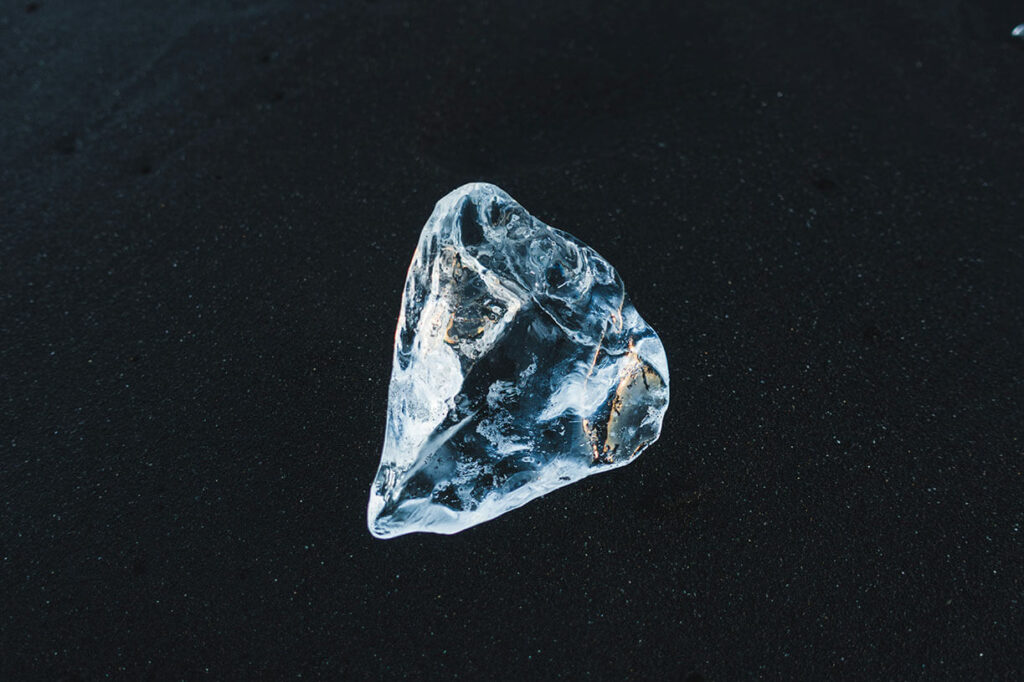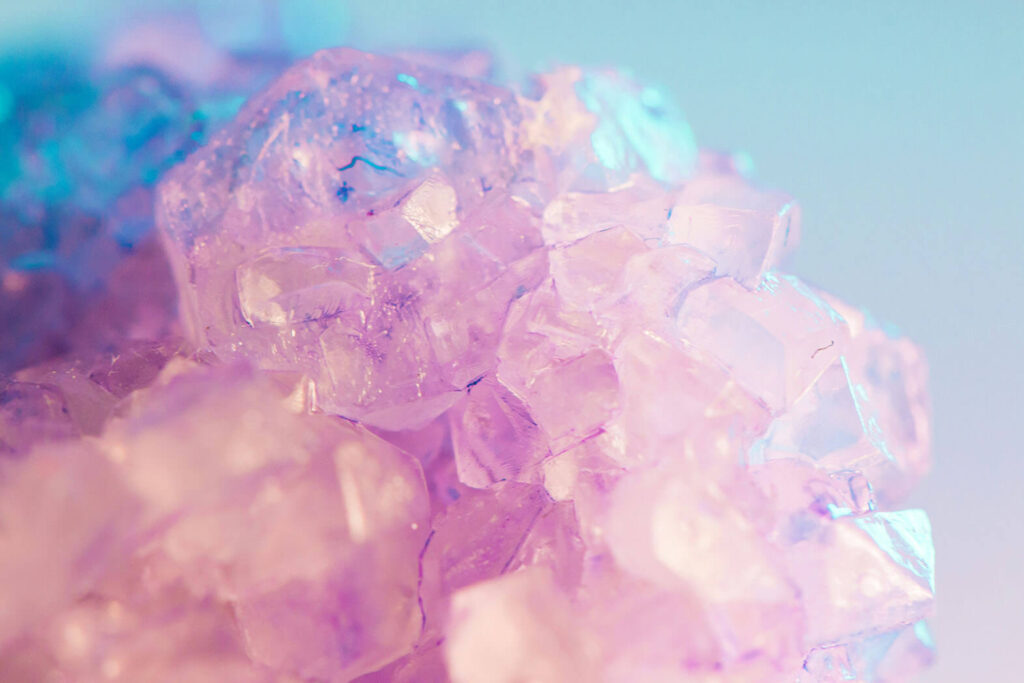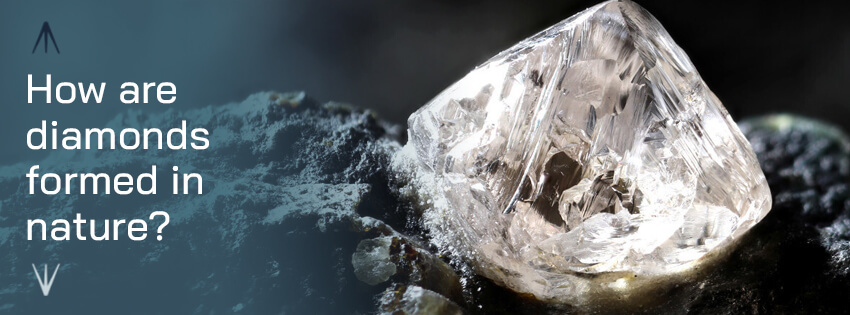Imagine embarking on an exciting journey deep into the Earth, where extreme conditions hide one of nature’s most fascinating secrets: the formation of diamonds. This journey will not only reveal how these exceptional gems originate, but also allow you to discover why each diamond is a unique piece in the world.
What is a diamond?
 Before we dive into the mysterious process of their creation in nature, it’s essential to understand exactly what a diamond is. A diamond is more than just a simple precious stone; it is a form of crystallized carbon that is characterized by its extremely orderly and compact molecular structure, which gives it unmatched physical properties of hardness and clarity.
Before we dive into the mysterious process of their creation in nature, it’s essential to understand exactly what a diamond is. A diamond is more than just a simple precious stone; it is a form of crystallized carbon that is characterized by its extremely orderly and compact molecular structure, which gives it unmatched physical properties of hardness and clarity.
In simpler terms, it could be said that it is a little piece of coal that, after a long time and under a lot of pressure, has become one of the hardest and most brilliant stones that exist.
Unique Properties of Diamonds
- Hardness: Diamonds are the hardest naturally formed substance on Earth, meaning they can cut any other type of rock or metal.
- Brilliance: The way carbon atoms are aligned allows diamonds to reflect light spectacularly, making them shine intensely.
- Transparency: Unlike other stones, diamonds can be completely transparent, which makes them perfect for high-quality jewelry.
The Origin of Diamonds in Nature: A Process of Millions of Years Where does the formation of diamonds in nature begin?
Diamonds are much more than simple adornments; they are testimonies of an incredible journey and the powerful forces of nature. Starting their life at impressive depths of 140 to 190 kilometers beneath the Earth’s surface, in a region known as the upper mantle, diamonds form under conditions we can barely imagine.
A Journey from the Bottom of the Sea
It all begins with carbon, the fundamental element of life on Earth. This carbon may have a humble origin, coming from remnants of plants and animals that accumulated on the ocean floor. Over time, these carbon-laden sediments are dragged down into the mantle by the movements of tectonic plates, a process called subduction. Here, far from the sunlight and under tons of rock, begins the alchemy that transforms common carbon into a precious mineral.
High Pressure and Temperature
At these depths, where total darkness reigns, conditions are extreme. The temperature exceeds 1,200 degrees Celsius, enough to melt most surface rocks. The pressure is very strong, more than 50,000 times greater than what we feel here on the surface of the Earth. This extremely harsh environment causes carbon atoms to arrange themselves in a special way to form diamonds.

A Process Measured in Eons
The transformation of carbon into a diamond is not an event that happens overnight. It requires between 1 and 3.3 billion years, meaning that many of the diamonds that exist today began to form when the first multicellular organisms appeared on Earth. This incredible duration is what makes each diamond not only a visual marvel but also a fragment of our planet’s geological history.
Why Don’t All Diamonds Reach the Surface?
Not all diamonds formed in the mantle make the complete journey to the surface. Many remain trapped deep within, locked inside the mantle rock. The few lucky ones that do get discovered are propelled by volcanic eruptions that transport kimberlite (a type of volcanic igneous rock) and the diamonds from the mantle to the Earth’s crust, offering humans a glimpse of this natural miracle.
Kimberlite: The Home of Diamonds on the Surface
Upon reaching the surface, the kimberlite forms structures known as “pipes” or chimneys. These are the main sources of diamonds that miners seek and exploit today.
The relationship between kimberlite and diamonds is so close that finding one of these chimneys is often a sure indicator of the presence of diamonds.
Diamonds in Nature and Their Identification How are diamonds found in nature?
Diamonds do not always appear where we might expect to find them. While some reach the surface of the Earth directly through volcanic eruptions, others take more complicated and stealthy routes. Many diamonds remain trapped in the rock where they formed, at inaccessible depths. However, those that reach the surface may not stay in their original place.
Natural Processes of Diamond Transport
Over time, the action of erosion caused by water and wind can free these diamonds from their mother rock, the kimberlite, and transport them far away. Rivers, in particular, play a crucial role in this process. As the water flows, it can carry the diamonds downward, into valleys and plains, where they settle in the sediments of riverbeds. This type of deposit is called alluvial and is one of the most common sources of diamonds for mining.

Alluvial Mining
Alluvial mining occurs in riverbeds and beaches where diamonds have been deposited by natural processes. Here, miners use techniques such as sieving and excavation to recover the diamonds from among the sand, mud, and other sediments. This form of mining may be less technology-intensive than kimberlite chimney mining but requires detailed knowledge of the terrain and water flow patterns.
Identification and Characteristics of a Diamond in Nature
Identifying a diamond in its rough state can be a challenge, especially for those not trained to know what to look for. In their natural form, diamonds rarely exhibit the brilliance and clarity we associate with finished jewelry.
Visible Characteristics of an Uncut Diamond
An uncut diamond often looks like a common stone and can be translucent or opaque. It does not appear as brilliant or have the carefully cut shapes we see in jewelry stores. Moreover, it may be covered with a layer of other materials that make it even less recognizable.
How Cutting Transforms a Diamond
The process of transforming these rough diamonds into dazzling gems is both an art and a science. It involves cutting and polishing the diamond to maximize its play of light and brightness. This process not only reveals the hidden beauty of the diamond but also significantly increases its value in the market.
Every step in the journey of a diamond, from its deep formation in the earth to its eventual discovery and transformation, is a testament to the complex and fascinating forces of nature and human ingenuity. By understanding how diamonds are found and identified in nature, we appreciate them even more, not just as objects of beauty but as wonders of natural geology.
Conclusion: The Story Behind Each Diamond
Every diamond tells an incredible story, traveling from deep within the earth to becoming a beautiful jewel. These diamonds are formed under very harsh conditions and tell us how our planet has been shaped over the years. When you look at a diamond, you’re seeing much more than a pretty stone; it’s like a little treasure that shows us how ancient and powerful our world is.
So, remember that every time you see a diamond, you’re not just looking at a beautiful object, but a wonderful piece of the Earth. Have you ever wondered what other mysteries lie beneath the surface of our planet? Each diamond could be the key to discovering new fascinating stories.
Some Quick Questions About Diamonds in Nature How long does it really take for a diamond to form?
Diamonds take between 1 and 3.3 billion years to form. This extensive process is part of what makes each diamond so unique and valuable, as it reflects a long geological history.
Why do only some diamonds reach the surface of the Earth?
Not all diamonds formed in the mantle make the journey to the surface. Many remain trapped deep within, locked inside the mantle rock. Those that do reach the surface do so through violent volcanic eruptions that transport rocks such as kimberlite, which include the diamonds, from the mantle to the Earth’s crust.
How are diamonds mined in nature?
Diamonds can be mined in two main ways: kimberlite chimney mining and alluvial mining. The former involves extracting directly from the “chimneys” where the kimberlite has brought diamonds to the surface. Alluvial mining, on the other hand, is carried out in riverbeds or on beaches where diamonds have been deposited by natural processes such as erosion.




